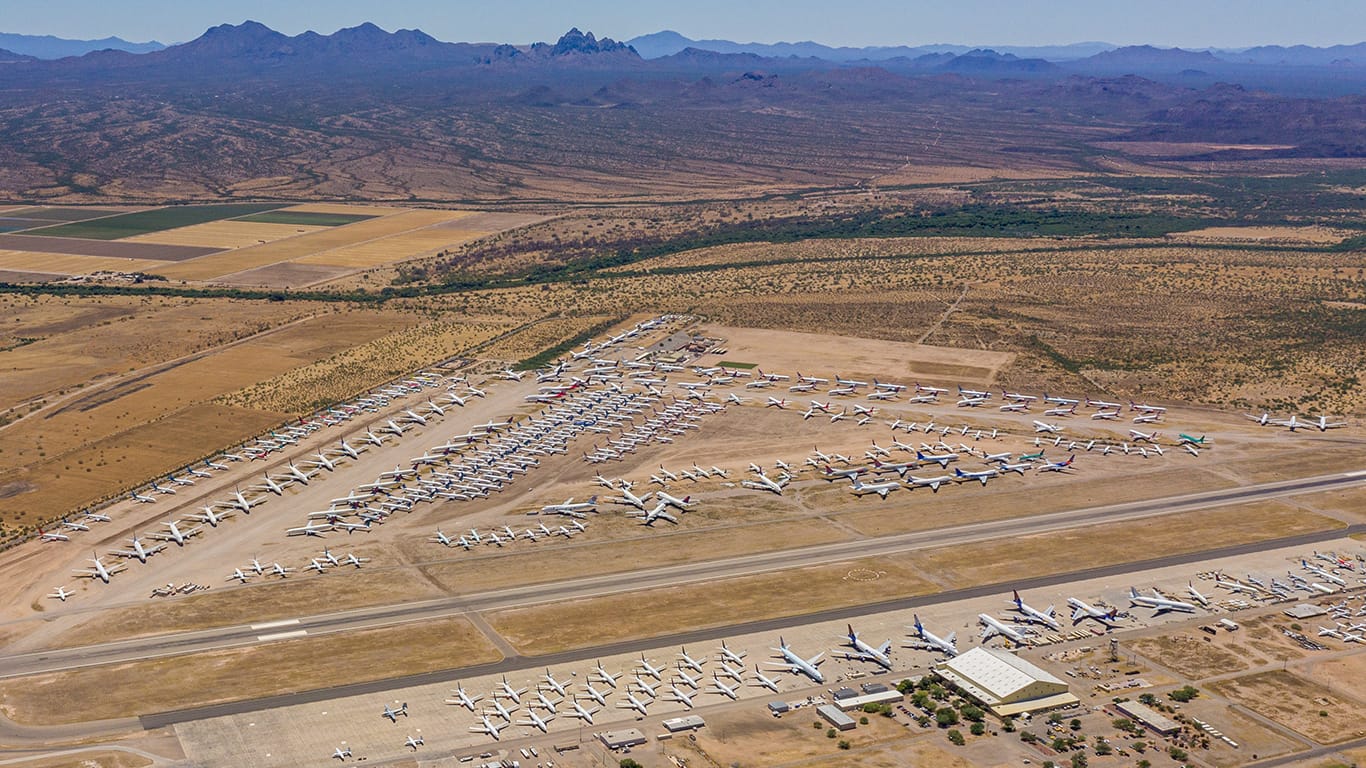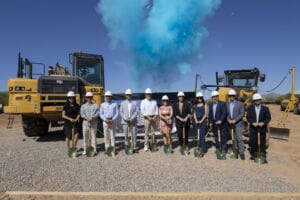Arizona’s aerospace industry has long been a critical sector for the state, with the Aeronautical Repair Station Association ranking Arizona among the top two for aviation maintenance economic activity. While Greater Phoenix and Tucson are home to many companies in the sector, Pinal County has seen a recent surge of aviation-related development from companies such as Win Aviation and Ascent Aviation Services.
MORE NEWS: The Most Influential Women in Commercial Real Estate for 2024
Hennie van Niekerk, pre-construction manager at Alston Construction, says that there are multiple reasons why the aviation industry is growing. The state’s low humidity and minimal rain reduces the risk of corrosion and weather-related damage to aircraft, making it an appealing place to build a hangar.
“Arizona has a reputation for being business-friendly, offering various tax incentives and favorable regulations to attract and retain businesses. These incentives can potentially encourage private hangar development by reducing the financial burden on developers and operators,” van Niekerk writes in an email.
One company investing in Pinal County is Win Aviation. Alston Construction is building a new 36,000-square-foot hangar located at Coolidge Municipal Airport for Win Aviation’s maintenance operations.
“In a nutshell, [Win Aviation] purchases aircraft from the military and lease them back, and they cover the maintenance in between,” van Niekerk continues. “They have approximately 28 aircraft, along with pilots who fly them. When the planes need major repairs, they will either come to Arizona or to their headquarters in Illinois.”
The hangar has airside access via the taxiway, which makes this project unique.
“The hangar has a concrete apron on the front of it, but it also has a hangar door in the front and back,” van Niekerk explains. “That means [Win Aviation] can take the aircraft from the front to the back, which is not common.”
Pinal Airpark
Southeast of the Coolidge Municipal Airport is Pinal Air Park, which is the site of Ascent Aviation Service’s recent expansion. The $55 million project will increase the company’s hangar capacity by 180,000 square feet, along with an additional 60,000 square feet of storage and shop space. Ascent Aviation Services will use the facility to convert two lines of Boeing B777-300ER aircraft for Israel Aerospace Industries, supporting more than 300 new jobs.
“This investment not only enhances our aerospace capabilities, but also underscores the collaborative and regional spirit of our community,” says Joe Snell, president and CEO of Sun Corridor Inc., in a press release. “Together, we continue to position Southern Arizona as a leader in aviation innovation, driving economic growth and prosperity for generations to come.”
Scott Butler, chief commercial officer for Ascent Aviation Services, adds that the company will gut existing passenger aircraft, reinforce all the structural areas and cut out a larger door to make room for cargo before doing a heavy maintenance check and recertifying the plane for cargo operations.
“There are freighters delivered directly from Boeing, but they cost as much as a brand-new aircraft,” Butler explains. “The business case [for Ascent Aviation Services] is to take a mid-lifecycle aircraft — which for a wide-body plane is anywhere from 15 to 20 years — and convert it to cargo, which gives the owner another two decades plus out of that aircraft.”
Arizona’s robust aviation industry makes it an attractive place to expand operations, Butler continues.
“As a company, you don’t want to be on an island by yourself,” he says. “You want to make sure the ecosystem can continue to support you. Not only do we need workers and infrastructure, but we need a good government partner like Pinal Airpark and the county to help remove roadblocks.”
Having an existing supply chain is also a boon for business, especially since Ascent Aviation Services needs to turnaround aircraft quickly at times.
“A lot of our vendors are all within Arizona or very close by,” Butler says. “There are several companies in Phoenix and in Tucson that can support us on different aircraft. Luke Air Force Base and Davis-Monthan Airforce Base creates a pipeline, including people innovating and starting their own companies here.”
Construction quirks
Every project has its own intricacies, but building at an airport comes with its own unique challenges. Jim Petty, airport operations manager at Pinal Airpark, notes that nearly anytime something is built at the airport, the Federal Aviation Administration (FAA) gets involved.
“If [a project] changes anything on the airport layout plan, it has to be environmentally cleared,” he explains. “Depending on the size and scope of the project, it can be as simple as writing an email.”
A building may require what’s called a categorical exclusion, where the construction company fills out a document asking environment related questions such as archaeological hotspots, endangered species and wetlands. Petty notes that the categorical exclusion process for Ascent Aviation Services’ project took nearly three months to complete, whereas an environmental impact statement — which is the most comprehensive process — can take upwards of three years to get approval.
Safety is another primary concern of the FAA, and a safety plan must be signed off by the agency before any construction can begin.
“They review [the safety plan] and either accept it or make comments on what needs to change,” Petty says. “That helps ensure that people are using the runway facilities in a safe manner with proper signage and barricades during construction. For a project like Ascent is doing, we have to do a notice of proposed construction to the FAA. That includes reporting the latitude and longitude of the buildings and the height of the building. The FAA analyzes that to see if there’s going to be any impact to flight at the airport, or if it’s a tall structure it may need to be illuminated.”
Dean Howard, director of business development at Alston Construction, adds that building at an airport requires coordination with multiple stakeholders, including officials from the FAA, airport and city. Getting construction materials in and out of the airport is more challenging than a typical jobsite, and security concerns may require workers to have an escort onto the premises.
“The regulations and bureaucracies involved can get technical, whether you’re working at a large airport like Sky Harbor all the way down to these smaller municipal airports. There’s an extra air of caution and nuances we have to be familiar with,” he continues.
From an economic development perspective, Howard is bullish on Pinal County and sees it as a region ripe for continued growth.
“We’ve all learned that we need to have a diverse economy in this state, and in my opinion, Pinal County is the hot spot for development right now,” he concludes. “There’s Lucid Motors, LG Energy Solution already there, and lots of other companies are looking down there to locate. Pinal County is turning into one of the most diverse markets in the state.”




